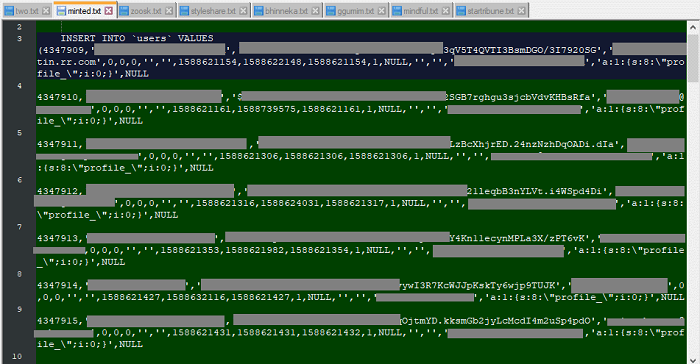传统基于单机的数据库技术已经无法支撑海量数据的访问处理,在此情况下,支持系统高扩展,强一致的分库分表Sharding架构的数据库集群GaussDB 100应运而生。它采用Shared-nothing架构的分布式系统,它是由众多拥有独立且互不共享CPU、内存、存储等系统资源的逻辑节点组成。
1、操作系统设置
1.1 内核参数
[root@hwd10 ~]# /etc/sysctl.conf kernel.sem = 50100 128256000 50100 2560 net.core.netdev_max_backlog = 1000 net.ipv4.tcp_max_syn_backlog = 2048 kernel.core_pattern = /tmp/core.%p.%e kernel.core_uses_pid = 1 kernel.shmmni = 4096 net.ipv4.ip_local_port_range = 9000 65500 net.core.rmem_default = 262144 net.core.wmem_default = 262144 net.core.rmem_max = 4194304 net.core.wmem_max = 1048576 fs.aio-max-nr = 1048576 fs.file-max = 6815744 [root@hwd10 ~]# sysctl -p [root@hwd10 ~]# vi /etc/profile ulimit -c unlimited [root@hwd10 ~]# source /etc/profile1.2 禁用防火墙以及SElinux
[root@hwd10 ~]# systemctl disable firewalld Removed symlink /etc/systemd/system/multi-user.target.wants/firewalld.service. Removed symlink /etc/systemd/system/dbus-org.fedoraproject.FirewallD1.service. [root@hwd10 ~]# sed -i -e 's,enforcing,disabled,' /etc/selinux/config 完成后,重启服务器。
1.3 安装软件包
[root@hwd10 ~]# yum install -y zlib readline gcc python python-devel perl-ExtUtils-Embed readline-devel zlib-devel lsof1.4 创建用户
[root@hwd10 ~]# groupadd dbgrp [root@hwd10 ~]# useradd -g dbgrp -d /home/omm -m -s /bin/bash omm [root@hwd10 ~]# echo redhat|passwd --stdin omm Changing password for user omm. passwd: all authentication tokens updated successfully.1.5 创建软件目录
[root@hwd10 ~]# mkdir -p /opt/software/gaussdb [root@hwd10 ~]# cd /opt/software/gaussdb/ [root@hwd10 gaussdb]# tar -xzf /tmp/GaussDB_100_1.0.0-DATABASE-REDHAT-64bit.tar.gz2、安装GaussDB 100
[root@hwd10 gaussdb]# cd GaussDB_100_1.0.0-DATABASE-REDHAT-64bit [root@hwd10 GaussDB_100_1.0.0-DATABASE-REDHAT-64bit]# python install.py -U omm:dbgrp -R /opt/gaussdb/app -D /opt/gaussdb/data -C LSNR_ADDR=127.0.0.1,192.168.120.31 -C LSNR_PORT=1888 Checking runner. Checking parameters. End check parameters. Checking user. End check user. Checking old install. End check old install. Checking kernel parameters. Checking directory. Checking integrality of run file... Decompressing run file. Setting user env. Checking data dir and config file Initialize db instance. Creating database. Creating database succeed. Changing file permission due to security audit. Install successfully, for more detail information see /home/omm/zengineinstall.log.-U 指定安装用户和用户组。
-R 指定安装目录。
-D 指定数据文件目录,即GAUSSDATA目录。
-C 指定配置参数,可以指定多个。如果不指定,则按照/gsdata/data/cfg/zengine.ini中的默认配置项。
安装完成后,数据库默认是启动状态。
3、数据库的启动与关闭
3.1 启动数据库
[root@hwd10 ~]# su - omm [omm@hwd10 ~]$ cd /opt/gaussdb/app/bin [omm@hwd10 bin]$ python zctl.py -t start Zengine instance has already started.3.2 关闭数据库
[omm@hwd10 bin]$ python zctl.py -t stop Successfully stopped instance.4、设置用户白名单
GaussDB 100支持用户通过配置用户白名单、IP白名单、IP黑名单的方式,有效管控远程连接。
- 用户白名单:可通过添加zhba.conf有效条目,以限制指定用户只能从限定的IP访问数据库。
- IP白名单:配置TCP_INVITED_NODES参数,限制只能从指定IP访问数据库。
- IP黑名单:配置TCP_EXCLUDED_NODES参数,限制不能从指定IP访问数据库。
其中IP黑名单的优先级最高,一个IP地址同时配置在用户白名单、IP白名单和IP黑名单中,那么用户无法通过该IP地址远程连接数据库。
同时启用了用户白名单、IP白名单、IP黑名单时:
- 用户白名单中的用户可以通过用户白名单中的IP地址和IP白名单中的IP地址远程连接数据库(同时该IP地址不在黑名单中)。
- 如果客户端的IP地址在用户白名单zhba.conf或IP白名单中,且不在IP黑名单中,无论用户是否在用户白名单中,均可以校验成功,允许登录。
编辑zhba.conf,加入以下内容:
[omm@hwd10 bin]$ vi /opt/gaussdb/data/cfg/zhba.conf # ZENGINE Client Authentication Configuration File # =================================================== # # This file controls: which hosts are allowed to connect, # which ZENGINE user names they can use. Records take one of these forms: # # host USER ADDRESS # # (The uppercase items must be replaced by actual values.) # # The first field is the connection type: "host" is either a plain or SSL-encrypted TCP/IP socket # # USER can be "sys", a user name # # ADDRESS specifies the set of hosts the record matches. support '*' fuzzy matching # Put your actual configuration here # ---------------------------------- #TYPE #USER ADDRESS # IPv4 local connections: # IPv6 local connections: host * 127.0.0.1,::1 host * 192.168.120.0/24有两种方法使其生效:1、重启数据库;2、在线加载用户IP白名单,立即生效。这里演示下第二种方法,如下图:
5、创建表空间以及用户

更改sys密码如下:
SQL> alter user sys identified by "abcABC@12"; Succeed.6、使用DataStudio工具连接
注意:DataStudio开发工具需要JDK支持(请自行安装JDK)

注意:
当在centos使用redhat平台gaussdb100安装包进行安装时,会报如下错误:
Error: Run package GaussDB_100_1.0.0-RUN-REDHAT-64bit.tar.gz is inconsistent with os system centos.解决办法是注释掉install.py文件中的平台检查指令,即572~573两行,如下图:
- 版权声明:文章来源于网络采集,版权归原创者所有,均已注明来源,如未注明可能来源未知,如有侵权请联系管理员删除。




